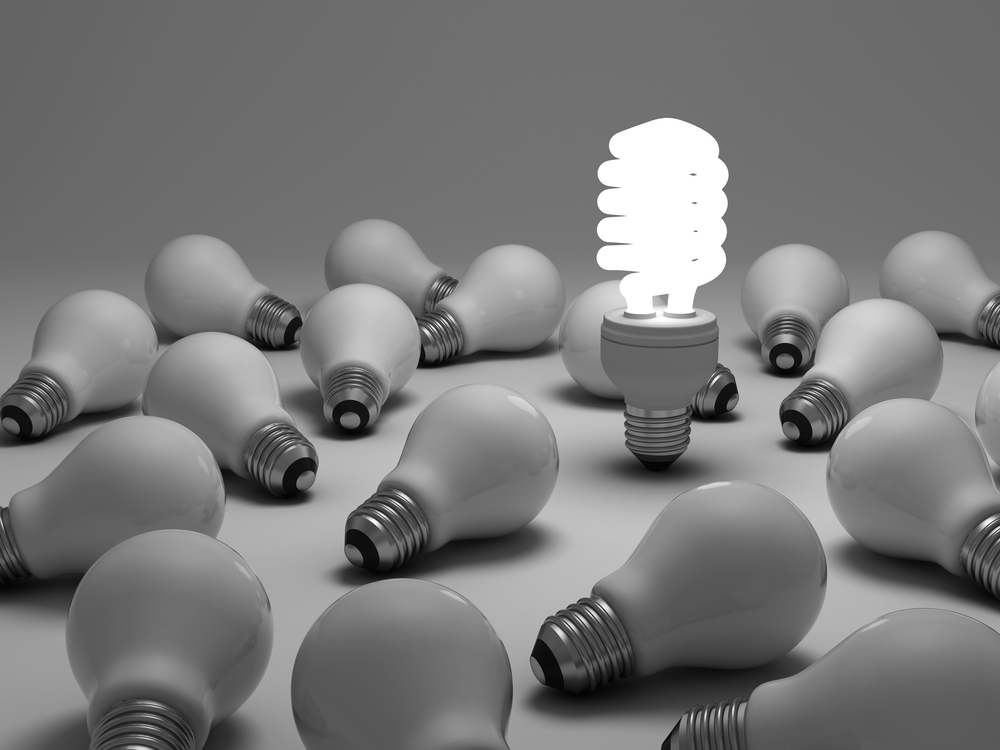SUSTAINABLE LIGHTING | INCANDESCENT LAMP
The Incandescent lamp also known as electric lamp or Filament lamp, but better known as the Electric BULB is a source of electric light that works by incandescence. An electric current passes through a thin filament, heating it to white hot until it produces light. The enclosing glass bulb prevents the oxygen in air from reaching the hot filament, which otherwise would be destroyed rapidly by oxidation. Incandescent light bulbs come in a range of shapes and sizes. The names of the shapes may be slightly different in some regions.

Incandescent bulbs are manufactured in a wide range of sizes, light output, and voltage ratings, from 1.5 volts to about 300 volts. They require no external regulating equipment, have low manufacturing costs, and work equally well on either alternating current or direct current. As a result, the incandescent bulb is widely used in household and commercial lighting, for portable lighting such as table lamps, car headlamps, and flashlights, and for decorative and advertising lighting. However Incandescent bulbs are much less efficient than other types of electric lighting as they convert less than 5% of the energy they use into visible light while the remaining energy is converted into heat. The luminous efficacy of a typical 120V incandescent bulb is 16 lumens per watt, compared with 60 lm/W for a compact fluorescent bulb or 150 lm/W for some white LED lamps. As an Architect, I have described the advantages and disadvantages of sodium vapour lamps in Green buildings, under the following headings:
What are the advantages of Incandescent lamps in green buildings?
What are the disadvantages of Incandescent lamps in green buildings
ADVANTAGES OF INCANDESCENT BULB:
Availability: Incandescent bulbs are easily available in a wide range of sizes and voltages, from 1.5 volts to about 300 volts.
Extra equipment: They require no external regulating equipment and work well on either alternating current or direct current.
Colour Rendering: They produce warm light colour and have excellent colour rendering (Ra-!00) which means, the colours of objects under this light appear almost the same as in daylight.
Disposability: They are easily disposable as they do not contain any hazardous material to the environment.
As a result the incandescent lamps are widely used in household and commercial lighting, for portable lighting, such as table lamps, some car headlamps and electric flashlights, and for decorative and advertising lighting.
DISADVANTAGES OF INCANDESCENT BULB:
Luminous Efficacy: The Incandescent Bulbs have poor luminous efficacy – for every watt of energy consumed, only 12 to 14 lumens of visible light is produced. This is because approximately 90% of the power consumed by an incandescent light bulb is emitted as heat, rather than as visible light.
Life: They have a short life – just about 1000 hours, in comparison to other lamp types.
 As a result, Incandescent light bulbs are gradually being replaced in many applications by CFL- Compact Fluorescent lamps, high-intensity discharge lamps, light-emitting diodes (LEDs), and other devices, which give more visible light for the same amount of electrical energy input. Some jurisdictions are even attempting to ban the use of incandescent light bulb in favour of more energy-efficient lighting.
As a result, Incandescent light bulbs are gradually being replaced in many applications by CFL- Compact Fluorescent lamps, high-intensity discharge lamps, light-emitting diodes (LEDs), and other devices, which give more visible light for the same amount of electrical energy input. Some jurisdictions are even attempting to ban the use of incandescent light bulb in favour of more energy-efficient lighting.
Related Topics:
- Green Buildings Lighting | Compact Fluorescent Lamps
- Green Buildings Lighting | Fluorescent Tube Light
- Green Buildings Lighting | Metal Halides
- Green Buildings Lighting | Sodium Vapour Lamp
- Green Buildings Lighting | LED
- Green Buildings Lighting | Halogen
Also Read about:
If you found this post useful, all it takes is a simple click on the “pin it” “like,” “share,” “tweet,” or Google+ buttons below the post.


